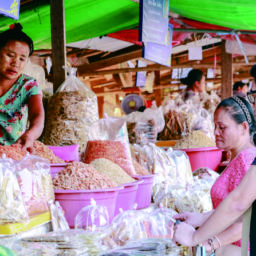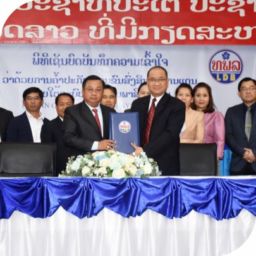

CREATING A REGIONAL TRADEMARK REGISTRATION SYSTEM FOR ASEAN
Arthur Simon is an Indonesian dermatologist, based in Balikpapan, Kalimantan. For the past thirteen years, he has been developing his own line of skincare products.
‘Many of my patients were using products that do not necessarily fit their specific needs’, he said. ‘I wanted to provide them with something that is specifically formulated for our specific climate and skin conditions.’
Although his skincare product line continues to grow in prominence in Indonesia, Simon is still wary about bringing his products to other ASEAN countries. ‘I know it would be a sensible progression considering the similarities in skin conditions and climate across the region’, he explained. ‘But the thought of having to repeatedly register my products in different countries which I am not familiar with is just daunting.’
The economic structure of ASEAN is increasingly dominated by small- and medium-sized enterprises (SMEs), which contribute to 30% of ASEAN national exports. Out of these export products and services, up to 60% is developed in intellectual property rights (IPR)-intensive industries.
‘As ASEAN economies become more integrated thanks to the free flow of goods, navigating intellectual property (IP) issues will become more complicated for technology and knowledge-intensive SMEs’, said Ignacio de Medrano, Head of Service of the International Cooperation Area, EU Intellectual Property Office (EUIPO) and former project leader of the Enhanced ASEAN Regional Integration Support from the European Union’s Intellectual Property Rights (ARISE Plus IPR) programme.
the International Cooperation Area, EU Intellectual Property Office (EUIPO) and former project leader of the Enhanced ASEAN Regional Integration Support from the European Union’s Intellectual Property Rights (ARISE Plus IPR) programme.
For Simon, the complexity of navigating individual trademark requirements for each county he wanted to expand his business in became a major barrier to entering the regional market.
ASEAN has for long acknowledged the need for a regional trademark system and an ASEAN trademark office. The concept was first introduced on 15 December 1995 when the ASEAN Framework Agreement on Intellectual Property Cooperation was signed.
The idea was once again brought forward during the 8th ASEAN Trademark Consultation Meeting in Bangkok, Thailand between 15 and 17 August 2018. The ARISE+ IPR presented the concept note to conduct a feasibility study on the establishment of an ASEAN Trademark Registration System in line with the Action Plan initiative during the ASEAN Working Group on Intellectual Property Cooperation in Bangkok, 27 March 2019 which was approved by the ASEAN IP Offices. The Intellectual Property Office of the Philippines (IPOPHL) as country champion of this initiative and the ASEAN Intellectual Property Association (AIPA) were both consulted during the development of the concept note to assess the collaboration with ARISE+ IPR and its experts in conducting the study.
As part of the enhanced regional integration support from the EU, ARISE+ IPR welcomed the proposition as a key initiative to not only assess the feasibility of a regional trademark system but also to identify a model that will best suit ASEAN needs.
Drawing comparisons with the European Trademark System which was first implemented in the mid-1990s, ‘the study highlighted the way forward towards an ASEAN trademark registration system. It proposed one model that would best suit ASEAN in developing a sophisticated IP landscape in the region’, Medrano said.
‘The study also includes a cost-benefit analysis that shows how a regional trademark system would benefit both end users such as businesses and national IP offices.’
ARISE+ IPR also supported ASEAN in developing both the ASEAN Common Guidelines for Substantive Examination of Trademarks and the Common Guidelines for Substantive Examination of Industrial Designs. These guidelines will provide the foundation for setting up an ASEAN regional trademark registration system and will lower barriers of entry for foreign companies and SMEs like Simon’s. This will in turn promote higher capital inflows – both within ASEAN Member States and from outside of the region.







